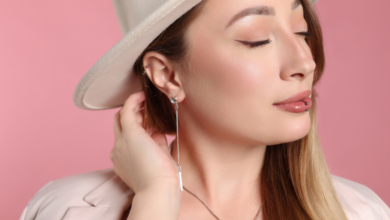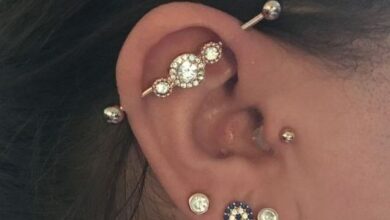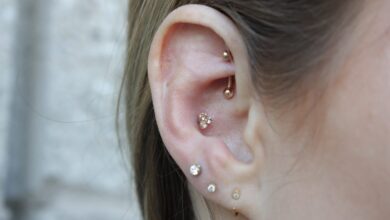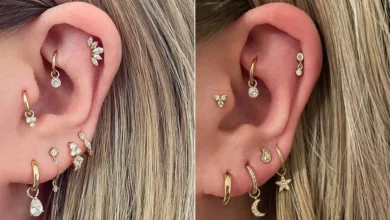
In this friendly guide, you’ll uncover everything you need to know about dermal anchors and surface piercings. Whether you’re a piercing enthusiast looking to try something new or simply curious about these unique body adornments, this expert guide will provide you with valuable insights. From understanding the difference between dermal anchors and surface piercings to learning about the procedure, aftercare, and potential risks involved, you’ll gain a comprehensive understanding of this fascinating aspect of body modification. Get ready to explore the world of dermal anchors and surface piercings like never before!
What are Dermal Anchors?
Dermal anchors, also known as microdermal implants, are a type of body modification that involves placing jewelry beneath the surface of the skin. Unlike traditional piercings that go through a specific entry and exit point, dermal anchors are inserted under the skin and anchor themselves in place, creating a unique and eye-catching look. These anchors consist of a flat plate or base with holes for the jewelry to be attached, providing a solid foundation for a variety of decorative options.

Definition of dermal anchors
Dermal anchors are small pieces of jewelry that are implanted under the skin, creating an anchor point for the attachment of various decorative jewelry. They are designed to stay in place and provide a stable foundation for the jewelry, giving the appearance of floating on the skin.
How dermal anchors are different from traditional piercings
One of the key differences between dermal anchors and traditional piercings is the way they are inserted. While conventional piercings go straight through the skin, dermal anchors are partially inserted under the skin, creating a pocket for the jewelry to sit in. This allows for more versatility in terms of placement and design, as the anchor point can be put almost anywhere on the body.
Another difference is the healing process. Traditional piercings typically heal by forming a channel of scar tissue, whereas dermal anchors heal by fusing with the tissue underneath the skin. This fusion creates a more secure and stable anchor point for the jewelry, reducing the likelihood of rejection or migration.

Types of dermal anchors
There are several types of dermal anchors available, each offering its own unique design and style. Some popular types include:
- Flat Base Anchors: These dermal anchors consist of a flat base that is implanted under the skin, providing a stable foundation for the jewelry. The base can be made of stainless steel, titanium, or other biocompatible materials.
- Screw-On Anchors: This type of dermal anchor features a screw-like design, allowing for easy attachment and removal of the decorative tops. The screw-on mechanism provides a secure hold, preventing the jewelry from accidentally detaching.
- Skin Divers: Skin divers are a type of dermal anchor that is flatter and more disc-like in shape. They are typically placed closer to the surface of the skin and offer a more subtle and understated look.
Advantages and disadvantages of dermal anchors
Dermal anchors offer numerous advantages over traditional piercings. Firstly, their unique design allows for more creative and personalized placement options. Unlike traditional piercings that are limited to specific areas of the body, dermal anchors can be placed in virtually any location. This opens up a world of possibilities for those looking to express their individuality and create a unique aesthetic.
Another advantage is the ability to change the decorative tops. Unlike traditional piercings where the jewelry is fixed, dermal anchors allow for easy interchangeability of tops. This means that you can switch up your style and experiment with different looks to suit your mood or outfit.
However, it is essential to consider the potential disadvantages of dermal anchors as well. One major concern is the risk of rejection or migration. Dermal anchors are implanted under the skin, and in some cases, the body may treat them as a foreign object, leading to rejection or movement of the anchor. This can result in discomfort, irritation, and potential scarring.
Additionally, the insertion process for dermal anchors requires a skilled and experienced piercer. Improper insertion can lead to complications, including infection or damage to surrounding tissue. Therefore, it is crucial to choose a reputable and knowledgeable piercer to minimize these risks.

Procedure and Aftercare for Dermal Anchors
Selection of a reputable piercer
When considering getting dermal anchors, it is crucial to choose a reputable and experienced piercer. Look for a piercer who has a good reputation, positive reviews, and a portfolio of previous work. It is also essential to ensure that they adhere to strict hygiene practices and use sterile equipment.
Preparations for the procedure
Before the procedure, the piercer will discuss your desired placement and design of the dermal anchors. They will also assess your skin and ensure that it is in good condition for the procedure. If you have any pre-existing medical conditions or concerns, it is essential to disclose them to the piercer.
Step-by-step process of dermal anchor insertion
- Sterilization: The piercer will sterilize the area where the dermal anchors will be inserted, typically using an antiseptic solution.
- Anesthesia: The area may be numbed using a local anesthetic to minimize any discomfort during the procedure.
- Incision: The piercer will make a small incision in the skin using a sterile needle, creating a pocket for the dermal anchor.
- Insertion: The dermal anchor is inserted into the pocket, ensuring that it is positioned correctly.
- Closure: The incision is then closed using sterile stitches or adhesive strips to aid in healing.
Aftercare tips for healing and maintenance
After the procedure, proper aftercare is crucial to ensure that the dermal anchors heal successfully. Some essential aftercare tips include:
- Cleaning: Clean the area around the dermal anchors with a saline solution or mild soap and water twice a day to prevent infection.
- Avoiding trauma: Avoid any activities or actions that may put stress or pressure on the dermal anchors, such as excessive touching or pulling.
- Avoiding excessive moisture: Keep the area as dry as possible to prevent the buildup of bacteria or excessive moisture, which can prolong the healing process.
- Avoiding submerging in water: Avoid swimming or submerging the dermal anchors in water until they are fully healed to prevent infection.
- Regular check-ups: Schedule regular check-ups with your piercer to ensure that the dermal anchors are healing as expected and to address any concerns.
Potential risks and complications
While dermal anchors can be a unique and eye-catching body modification, it is essential to be aware of the potential risks and complications associated with the procedure. Some possible risks include:
- Infection: If proper aftercare is not followed, there is a risk of infection around the dermal anchors. Signs of infection may include redness, swelling, pus, or excessive pain.
- Rejection: The body may view the dermal anchors as a foreign object and attempt to push them out. Signs of rejection may include excessive movement or shifting of the anchors, irritation, or prolonged swelling.
- Migration: Similar to rejection, the body may attempt to move or push the dermal anchors out, resulting in movement or shifting of the anchors under the skin.
- Scarring: Depending on individual healing and aftercare practices, there is a potential for scarring around the dermal anchors.
If you experience any concerning symptoms or complications, it is important to seek medical advice or consult with your piercer promptly.
(end of part 1)

Stylish.ae’s Ultimate Guide To Ear Piercings: From Lobe To Cartilage(Opens in a new browser tab)
Aftercare Affairs: Stylish.ae’s Essential Guide To Tattoo Healing(Opens in a new browser tab)
The Evolution Of Piercing: A Historical Perspective(Opens in a new browser tab)




